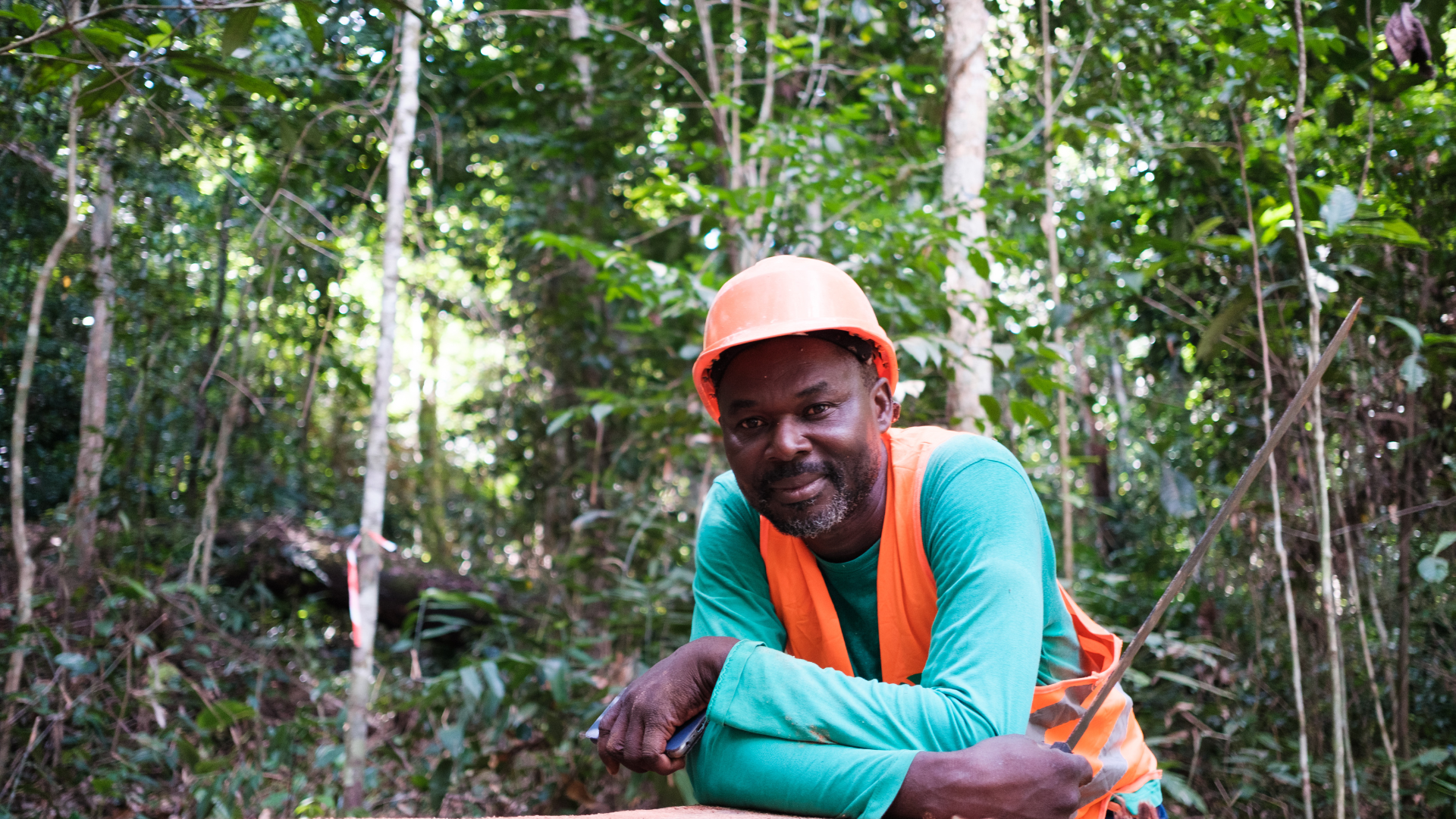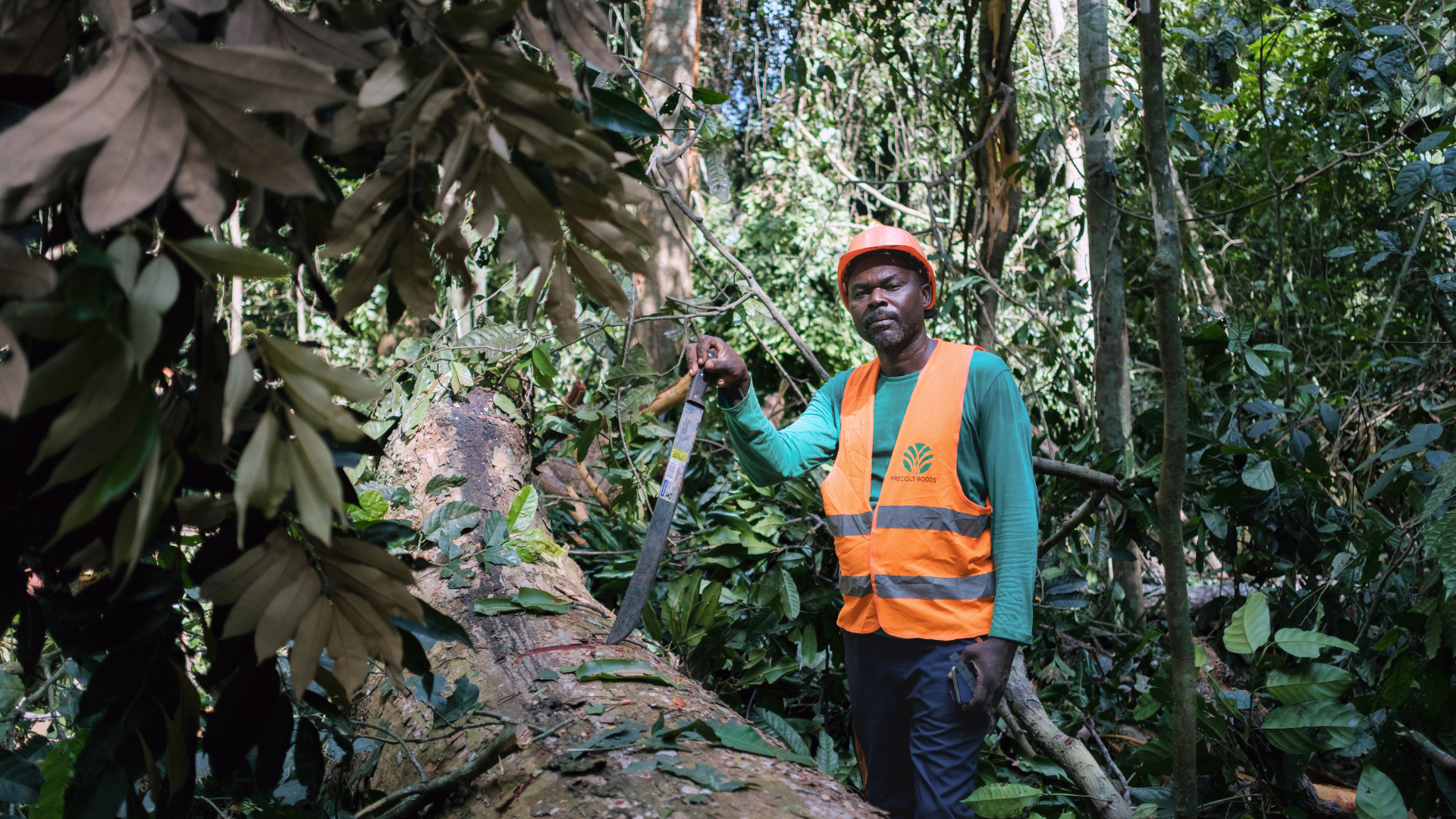Aimé Roger Malonda has spent his life in the forests of Gabon, in the heart of the Congo Basin; a region home to some of the world’s most diverse and vibrant ecosystems, teeming with wildlife, from forest elephants to gorillas and chimpanzees. "For me, the forest is life," he says. "And in this life, there is the spiritual and the physical. I think that when I can be sick, as soon as I go to the forest, I think that I am already healed, even in advance, before going to the hospital. Because in the forest, we find everything, and I have this passion."

Four generations of foresters
Aimé Roger’s connection to forestry is personal, woven through generations of his family. His parents were foresters, working in the same forests he now manages – CEB – and his son has followed in his footsteps. For Aimé Roger, this continuity is important as he wishes to ensure that the forests will be maintained for generations to come “to ensure the children of our children also come to work in this forest,” as he says.
In his role as Forest Logging Operations Manager for Precious Woods-CEB, he is responsible for the delicate balance of sustainable forestry. He believes that responsible forestry can coexist with the forest’s health and wants to prove that foresters are not deforesters. “We don’t just take from the forest; we ensure it can regenerate and thrive,” Aimé Roger explains. “Our goal is to harvest responsibly, allowing the forest to heal so that we can return in 25 years and continue this cycle. In some areas, we only take from one hectare at a time, depending on what we find, so that the forest has the space and resources to recover”.

The forest and the community
Aimé Roger’s commitment to both environmental and social responsibility is clear. He understands the importance of giving back to the community while safeguarding the forest. “Today, the villages surrounding the forest benefit from the projects they themselves have requested,” he says. “In the past, these villages were isolated, with no access to roads. Now, thanks to roads built around the concession, they have access to healthcare and schools.” These roads have transformed lives, opening up opportunities for education and medical care, and creating a stronger bond between the forest and the people who depend on it. A key example of this balance is ensuring that the forest’s resources are used wisely. Certain plants found in the forest are vital for local diets, such as the leaves used to prepare manioc, a staple food. “We don’t allow our workers to cut these leaves,” Aimé Roger notes. “Instead, the villagers collect them, helping to provide a small income from the forest that supports their families. This way, the forest nourishes the community without depleting its resources.”
Beyond the forest’s resources, Aimé Roger also places a strong emphasis on protecting its wildlife. Within the Precious Woods concession, a dedicated team focuses on fauna protection, with over 500 cameras installed to monitor the forest and detect any illegal activities. While logging can temporarily disrupt animal activity, particularly for species unaccustomed to the noise, the forest quickly finds its equilibrium. “The animals move away at first, but they return once they realize there is no threat,” he explains. This approach ensures that logging operations do not harm the forest’s biodiversity.
Certification as a commitment
Aimé Roger sees FSC certification as a vital tool in his work. It’s not just about adding value to the wood. For him, certification ensures that the forest is managed responsibly. “Having a certified forest means the wood is recognized for its quality and meets high standards, which opens up better market opportunities,” he explains.
But the real significance of certification, he says, lies in its commitment to sustainability. “With certification, we’re held accountable. We can’t just take everything from the forest. The audits and oversight ensure that we are working in a way that preserves the forest for the future.” He likens it to the structure of a classroom, where guidance and assessment lead to improvement. “Without that accountability, you can’t improve. Certification gives us the framework to work properly, with care, and to protect the forest.”
As Aimé Roger looks to the future, his commitment remains unwavering. "We want our children’s children’s children to still find this forest here," he says. "The forest has a great value and this value we do not want to lose it, and we want to preserve it until the end.”
Through careful stewardship, he ensures that the forests of the Congo Basin continue to thrive for generations, supporting not only the biodiversity that calls it home but the communities that rely on it for their livelihoods. As the keeper of this balance, Aimé Roger plays a vital role in ensuring that the delicate relationship between people, wildlife, and the forest remains in harmony for years to come.
To hear more from Aimé-Roger’s, check out his video.
Additionally, explore how FSC-certified tropical timber from the Congo Basin is driving sustainable construction, including its key role in the preservation of the Amsterdam canals, in this interactive story about FSC certification and its impact on forest management in Gabon.
